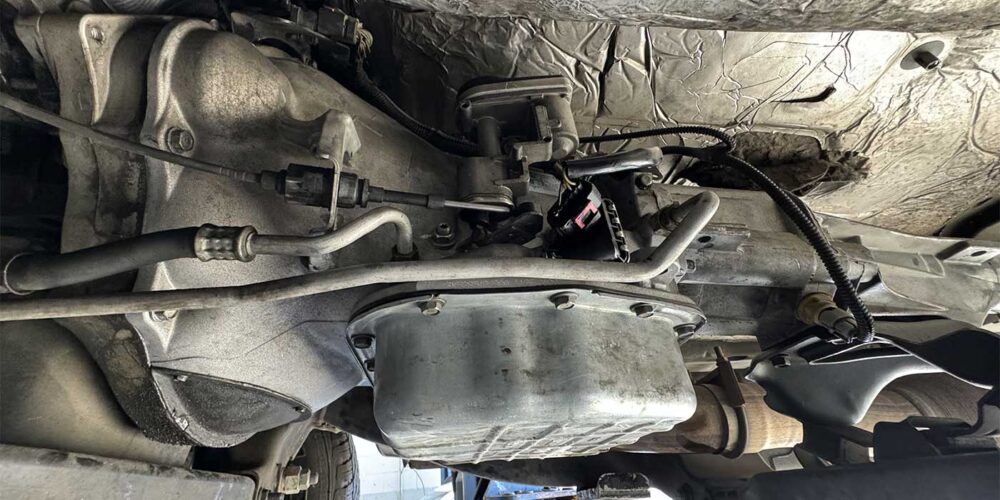A 2010 3.0L Cadillac AWD CTS using a 6L45 transmission comes into the shop with a no-forward complaint. This particular vehicle is known for having the output shaft suffer from fretting, in which the output shaft to transfer case input shaft spline will strip and cause a no-move (figures 1 and 2).
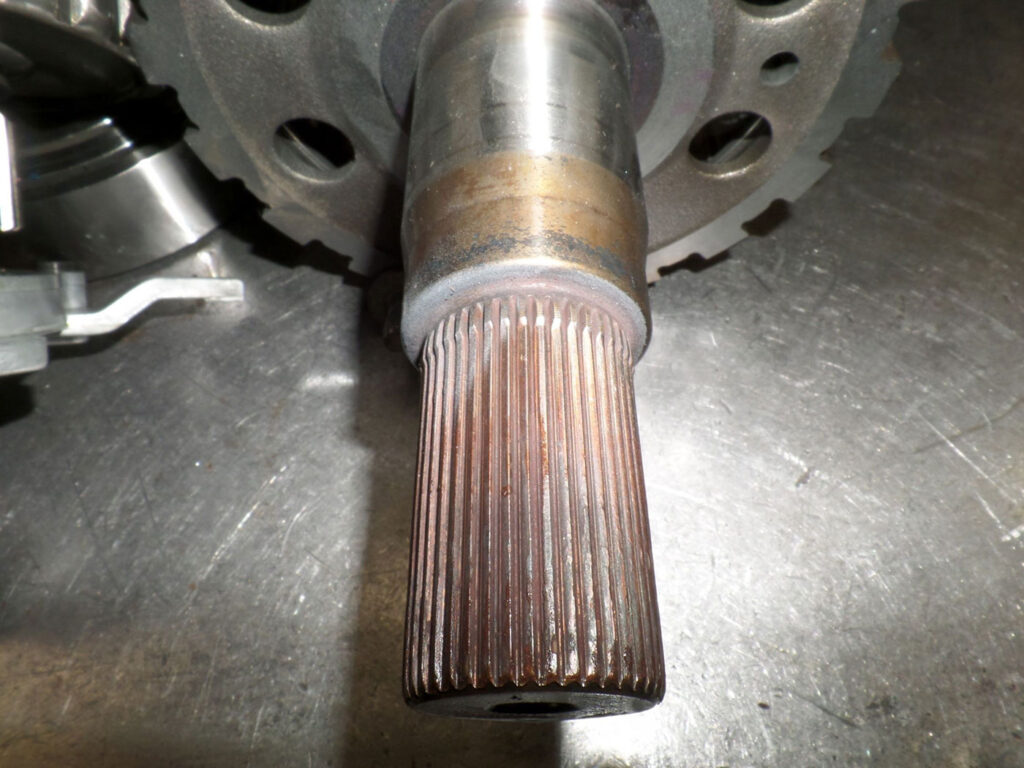
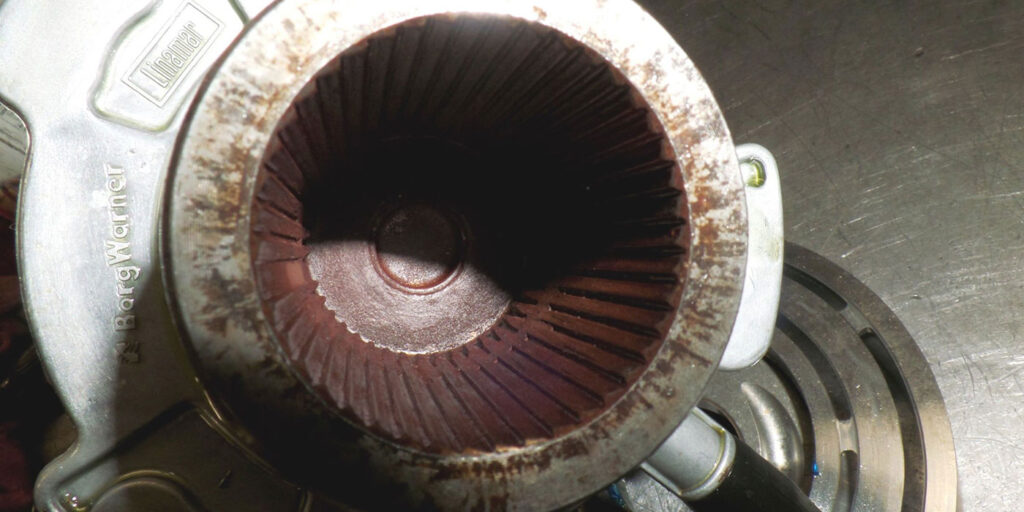
Sometimes, due to the rotation of the stripped spline, the angle of the strip will allow for reverse to work and catch the edge of the spline (figure 3).
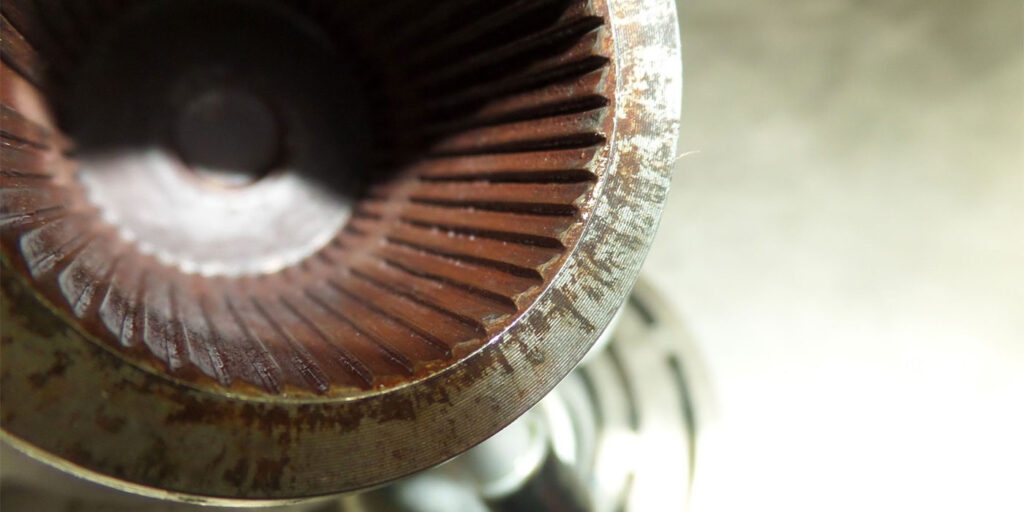
To fix this problem, an updated output shaft that is fitted with a O-ring (figure 4), and a new transfer case input shaft needs to be purchased and installed using fretting preventing corrosion grease. GM updated this output with their new design in many of their newer models.
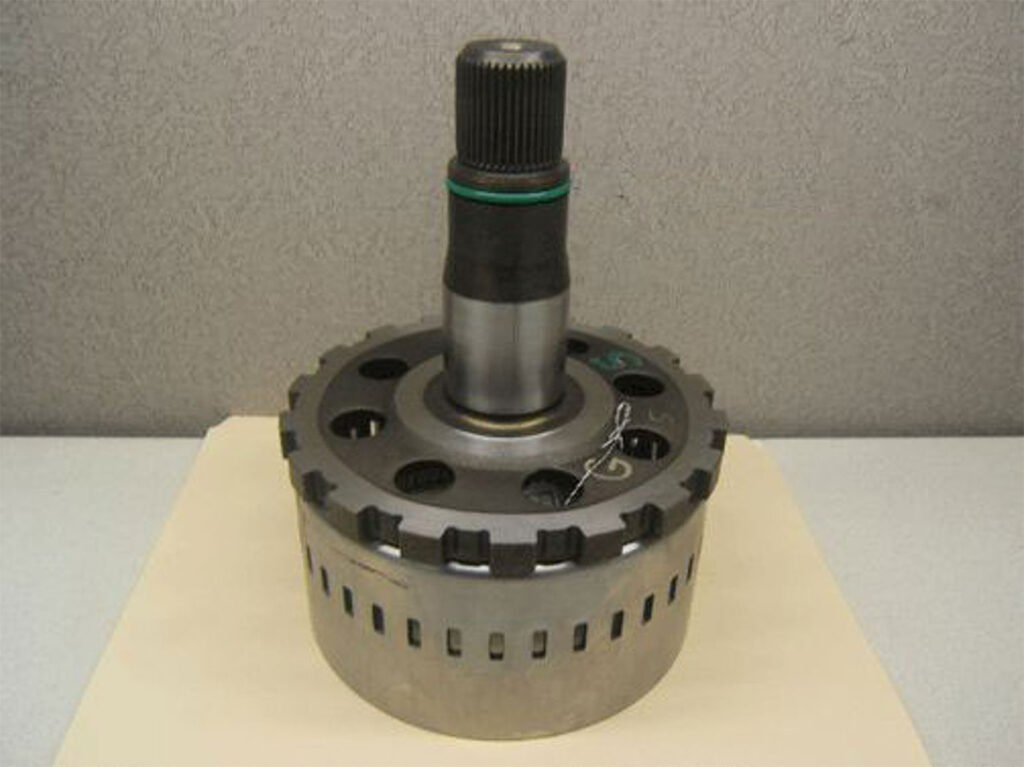
Back to the story at hand: when with this 2010 Cadillac AWD came in, able to reverse but unable to move forward, it was immediately assumed that this common output shaft problem was the cause of the complaint. But once the transfer case was removed, it became immediately evident that this was not the case.
When the pan was dropped, there were no clues to point to the initial problem; the fluid was clean and free of contaminates. The unit was then removed and the techs started thinking there may be a cracked weld in the 1-2-3-4 clutch drum or a cracked 1-2-3-4 clutch piston (figure 5).
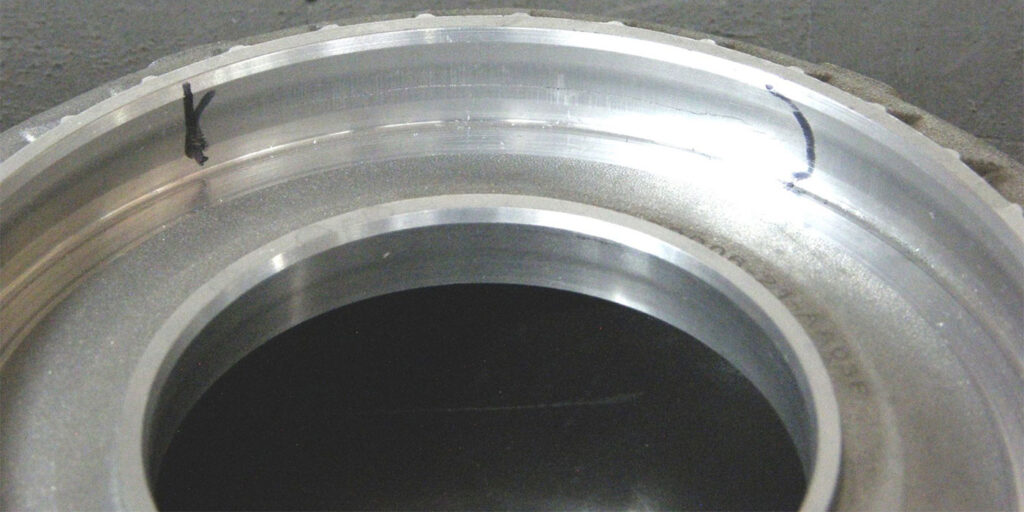
But again, neither was the case here. The valve body was next to be investigated and sure enough, after a bit of scrutiny, the problem was located. The number 1 check ball had disintegrated enough to cause feed oil to the clutch to leak past the ball to an exhaust at the clutch select valve 2 (see figures 6, 7, 8 and 9).
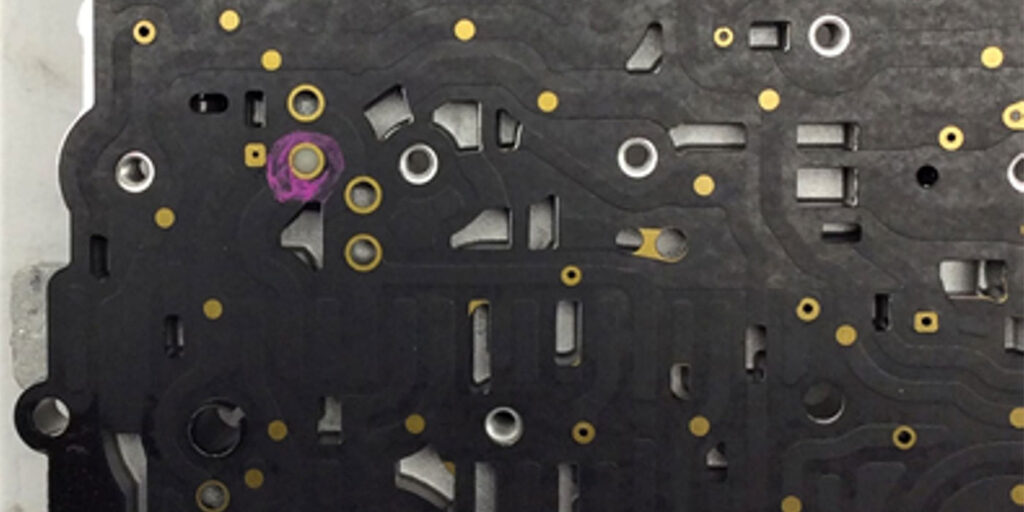
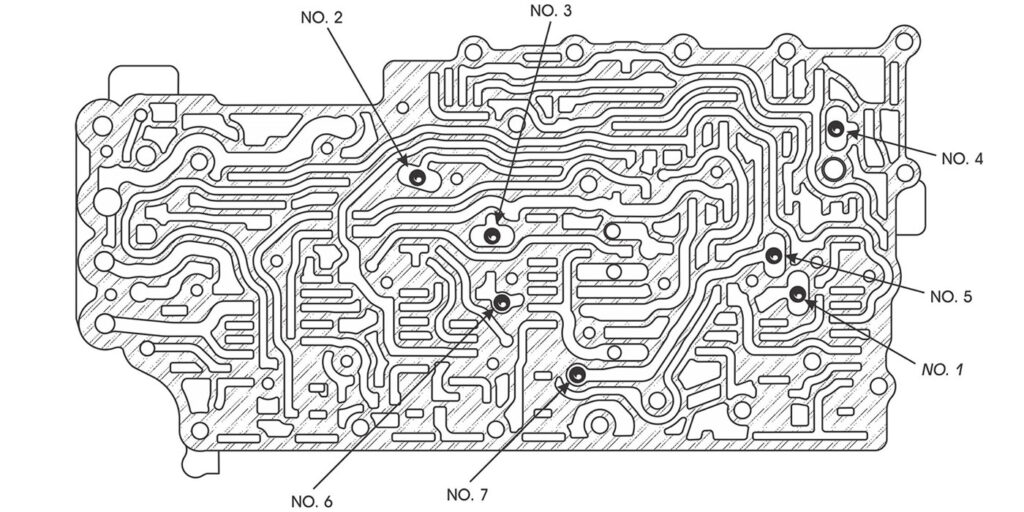
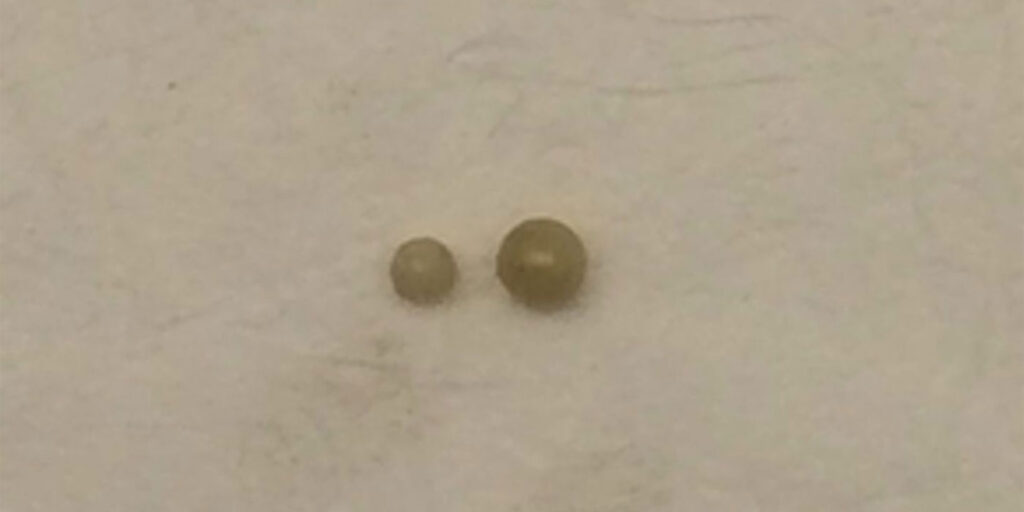
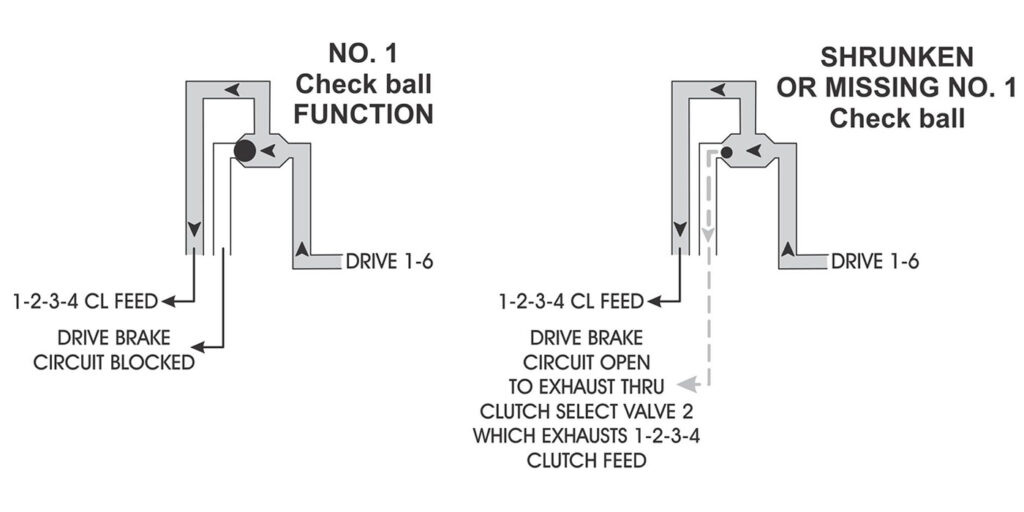
If this ball is not so severely disintegrated, it will exhibit a complaint of a slip/delay during launch in the forward ranges, typically in first gear. Sometimes this problem is temperature sensitive: it won’t move in the cold but moves in the heat. This complaint may also be accompanied by diagnostic trouble codes such as P2723 Clutch Pressure Control Solenoid 5 (1-2 3-4) “Stuck Off,” or P2728 Clutch Pressure Control Solenoid 5 (1-2 3-4) “Performance.”
Beau Hansen is an R&D specialist at ETE Reman and provided the images for this article.
Click here to read more articles in our Shift Pointers series.





